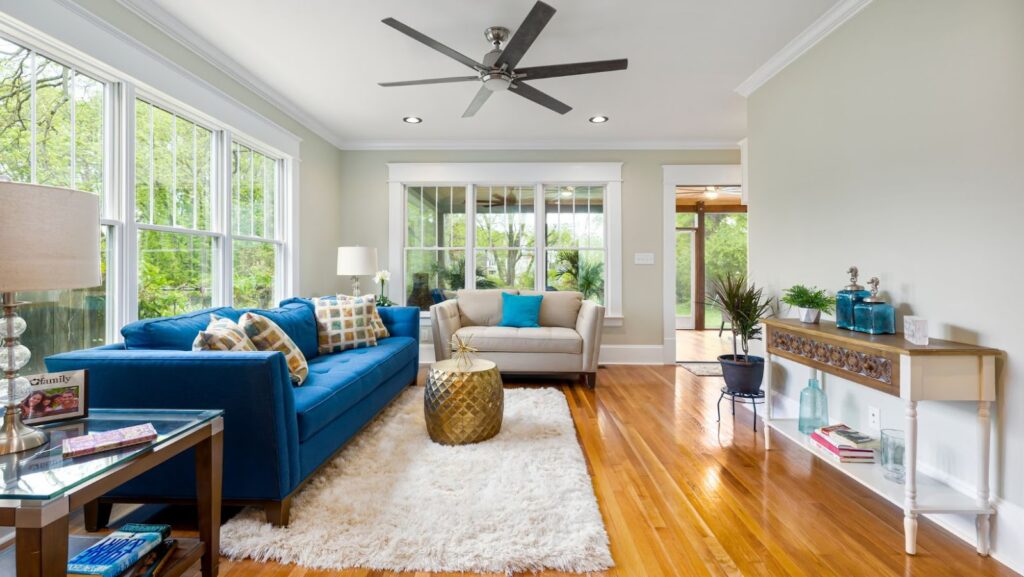Having a consistently cool and comfortable home is essential during hot summer months. However, it can be frustrating when some rooms in your house aren’t getting adequately cooled. There can be several reasons behind this issue, ranging from poor insulation to inefficient airflow. In this article, we will explore the common factors that may contribute to uneven cooling in your home. By understanding these reasons, you can take appropriate steps to improve the cooling efficiency and create a more comfortable living environment.
1. Inadequate Insulation
One of the primary reasons for uneven cooling is inadequate insulation. Insulation plays a crucial role in maintaining consistent temperatures throughout your home. If certain rooms are not well-insulated, they may struggle to retain cool air, resulting in uneven cooling. Insulation for attics helps to reduce heat transfer through walls, ceilings, and floors, creating a more comfortable indoor environment.
To address this issue, consider evaluating the insulation in your home. Focus on areas like the attic, walls, and windows. Adding insulation where needed can help improve energy efficiency and ensure more balanced cooling in all rooms.
2. Poor Airflow
Poor airflow can contribute to uneven cooling. When the airflow is restricted or obstructed, some rooms may not receive an adequate supply of cool air. This can be due to various reasons, such as clogged air filters, blocked vents, or ductwork issues.

Start by checking and cleaning your air filters regularly to ensure proper airflow. Additionally, make sure that furniture, curtains, or other objects are not blocking the vents in the rooms that aren’t cooling effectively. If you suspect ductwork issues, it may be beneficial to consult with professionals who specialize in commercial air conditioning to assess and address any problems.
3. Incorrect Thermostat Settings
Another factor that can contribute to uneven cooling is incorrect thermostat settings. If the thermostat is not properly calibrated or programmed, it may result in inconsistent temperatures throughout your home. The thermostat may be located in a room that gets cooled faster or may have settings that are not optimized for even cooling.
Ensure that your thermostat is set to the desired temperature and programmed correctly for your cooling needs. Consider using programmable thermostats that allow you to create customized schedules to maintain comfortable temperatures in each room.
4. Inefficient Air Conditioning System
An inefficient air conditioning system can also be a reason why all rooms in your house aren’t getting cooled enough. If your system is old, outdated, or not properly maintained, it may struggle to provide sufficient cooling capacity for your entire home. This can result in certain rooms being warmer than others.
Consider scheduling regular maintenance for your air conditioning system to ensure optimal performance. A professional technician can inspect and clean the system, check refrigerant levels, and identify any potential issues that may be hindering its efficiency. In some cases, upgrading to a more energy-efficient system may be necessary to achieve consistent cooling throughout your home.
5. Room-Specific Factors
There are certain room-specific factors that can contribute to uneven cooling. Rooms that receive more direct sunlight, have larger windows, or are located on upper floors tend to heat up more quickly. Poor insulation around windows and doors can also impact cooling efficiency.
To address these factors, you can consider installing window treatments, such as blinds or curtains, to reduce heat gain from sunlight. Additionally, sealing any gaps or cracks around windows and doors can help improve insulation and prevent cool air from escaping. Some insulation flooring in London can trap heat during the chilly winter seasons.
In summary, several factors can contribute to uneven cooling in your home.

Inadequate insulation, poor airflow, incorrect thermostat settings, an inefficient air conditioning system, and room-specific factors can all play a role. By identifying and addressing these issues, you can improve the cooling efficiency and create a more comfortable environment throughout your entire house. If you’re experiencing persistent cooling problems, it’s recommended to consult with professionals, such as commercial air conditioning specialists, to assess your system and provide expert guidance.


More Stories
The Business of Casinos and Lottery Systems: A Unique Perspective
The New Travel Trend: Gaming Platforms That Go Where You Go
Smart Ways to Nourish and Protect Your Plants